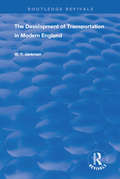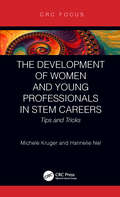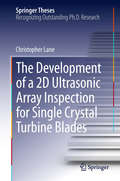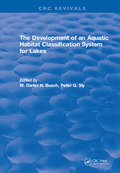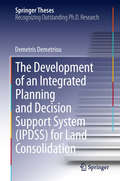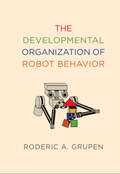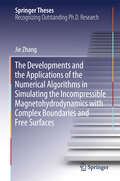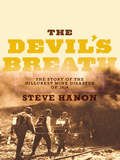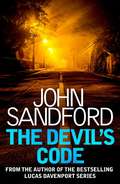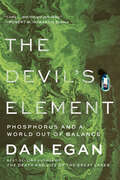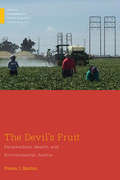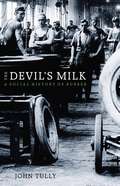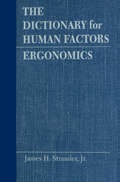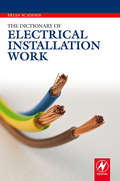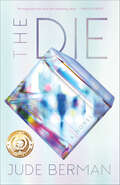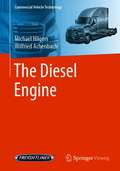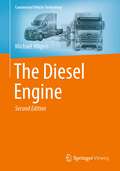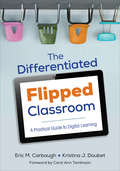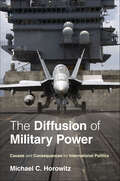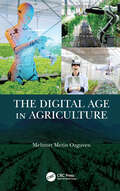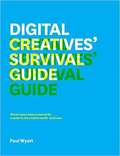- Table View
- List View
The Development of Science and Technology in Iran
by Abdol S. Soofi Mehdi GoodarziThis book examines the policies, conducts, and performances of organizations tasked with developing medium and high technologies in Iran. This collection assists readers in understanding the interaction between different players involve in the process of Iran's science, technology, and innovation development in specific technology areas over the last two decades. Chapters from expert contributors are organized into three themed parts: science and technology policy formulation and implementation, outcomes, and evaluation, including recommendations for further development of technological learning in Iran.
The Development of Transportation in Modern England (Routledge Revivals)
by William T. JackmanPublished in 1962: In offering this work as a modest contribution to our knowledge of the economic development of England from the standpoint of transportation, the author must say, in the first place that he has endeavoured to adhere rigidly to the subject in hand, withour making deviations into collateral fields
The Development of Women and Young Professionals in STEM Careers: Tips and Tricks (CRC Press Focus Shortform Book Program)
by Michele Kruger Hannelie NelThis book is fluent and systematic. The authors work through the fears and ambitions of young people new to STEM careers in the professional environment. Often, there is a lack of mentors, which leaves a young STEM practitioner exposed and doubting their own abilities. This book encourages young professionals and women in STEM careers to know that they are not alone and provides insight into their ability to deal with the stress of developing into a successful professional. Features Presents a method or vehicle to fast track young professionals and women in STEM Includes key issues that they should be aware of as they grow and develop in their education and field Describes how STEM career women are owners of their own path and provides an understanding of engineering and the business of consulting Conveys how young professionals and women in STEM can be aware of their own productivity and enjoy what they do and the career path they have selected This book is ideal for those new to the engineering, science, and consulting fields, including students in science and engineering education, administrators, libraries, those involved in leadership, organization behavior, human resources, STEM, and other areas as well.
The Development of a 2D Ultrasonic Array Inspection for Single Crystal Turbine Blades
by Christopher LaneThis thesis describes the development of a new technique to solve an important industrial inspection requirement for a high-value jet-engine component. The work - and the story told in the thesis - stretches all the way from the fundamentals of wave propagation in anisotropic material and ultrasonic array imaging through to device production and site trials. The book includes a description of a new method to determine crystallographic orientation from 2D ultrasonic array data. Another new method is described that enables volumetric images of an anisotropic material to be generated from 2D ultrasonic array data, based on measured crystallographic orientation. After extensive modeling, a suitable 2D array and deployment fixtures were manufactured and tested on in situ turbine blades in real engines. The final site trial indicated an order of magnitude improvement over the best existing technique in the detectability of a certain type of root cracking. The Development of a 2D Ultrasonic Array Inspection for Single Crystal Turbine Blades should be an inspiration for those starting out on doctoral degrees as it shows the complete development cycle from basic science to industrial usage.
The Development of an Aquatic Habitat Classification System for Lakes
by W.D.N. BuschIn the context of freshwater fisheries changing their strategies from the regulation of harvest and the enhancement of populations, to the creation and protection of habitats and the management of ecosystems, moves toward establishing an aquatic habitat classification system. Eight papers, from the February 1988 Symposium on the Classification and Inventory of Great Lakes Aquatic Habitats (the last in a series of Great Lakes Symposia), propose various classification approaches, most using a limited number of physical, chemical, and/or biological variables to produce some form of index. They also include overviews and summaries of the classification process.
The Development of an Integrated Planning and Decision Support System (IPDSS) for Land Consolidation
by Demetris DemetriouThis book provides an extensive review of three interrelated issues: land fragmentation, land consolidation, and land reallocation, and it presents in detail the theoretical background, design, development and application of a prototype integrated planning and decision support system for land consolidation. The system integrates geographic information systems (GIS) and artificial intelligence techniques including expert systems (ES) and genetic algorithms (GAs) with multi-criteria decision methods (MCDM), both multi-attribute (MADM) and multi-objective (MODM). The system is based on four modules for measuring land fragmentation; automatically generating alternative land redistribution plans; evaluating those plans; and automatically designing the land partitioning plan. The presented research provides a new scientific framework for land-consolidation planning both in terms of theory and practice, by presenting new findings and by developing better tools and methods embedded in an integrated GIS environment. It also makes a valuable contribution to the fields of GIS and spatial planning, as it provides new methods and ideas that could be applied to improve the former for the benefit of the latter in the context of planning support systems. "From the 1960s, ambitious research activities set out to observe regarding IT-support of the complex and time consuming redistribution processes within land consolidation - without any practically relevant results, until now. This scientific work is likely to close that gap. This distinguished publication is highly recommended to land consolidation planning experts, researchers and academics alike. " - Prof. Dr. -Ing. Joachim Thomas, Münster/ Germany "Planning support systems take new scientific tools based on GIS, optimisation and simulation and use these to inform the process of plan-making and policy. This book is one of the first to show how this can be consistently done and it is a triumph of demonstrating how such systems can be made operational. Essential reading for planners, analysts and GI scientists. " - Prof. Michael Batty, University College London
The Developmental Organization of Robot Behavior (Intelligent Robotics and Autonomous Agents series)
by Roderic A. GrupenA comprehensive introduction to the mathematical foundations of movement and actuation that apply equally to animals and machines.This textbook offers a computational framework for the sensorimotor stage of development as applied to robotics. Much work in developmental robotics is based on ad hoc examples, without a full computational basis. This book's comprehensive and complete treatment fills the gap, drawing on the principal mechanisms of development in the first year of life to introduce what is essentially an operating system for developing robots. The goal is to apply principles of development to robot systems that not only achieve new levels of performance but also provide evidence for scientific theories of human development.
The Developments and the Applications of the Numerical Algorithms in Simulating the Incompressible Magnetohydrodynamics with Complex Boundaries and Free Surfaces (Springer Theses)
by Jie ZhangThis thesis presents an accurate and advanced numerical methodology to remedy difficulties such as direct numerical simulation of magnetohydrodynamic (MHD) flow in computational fluid dynamics (CFD), grid generation processes in tokamak fusion facilities, and the coupling between the surface tension force and Lorentz force in the metallurgical industry. In addition, on the basis of the numerical platform it establishes, it also investigates selected interesting topics, e.g. single bubble motion under the influence of either vertical or horizontal magnetic fields. Furthermore, it confirms the relation between the bubble’s path instability and wake instability, and observes the anisotropic (isotropic) effect of the vertical (horizontal) magnetic field on the vortex structures, which determines the dynamic behavior of the rising bubble. The direct numerical simulation of magnetohydrodynamic (MHD) flows has proven difficult in the field of computational fluid dynamic (CFD) research, because it not only concerns the coupling of the equations governing the electromagnetic field and the fluid motion, but also calls for suitable numerical methods for computing the electromagnetic field. In tokamak fusion facilities, where the MHD effect is significant and the flow domain is complex, the process of grid generation requires considerable time and effort. Moreover, in the metallurgical industry, where multiphase MHD flows are usually encountered, the coupling between the surface tension force and Lorentz force adds to the difficulty of deriving direct numerical simulations.
The Devil's Breath: The Story of the Hillcrest Mine Disaster of 1914
by Steve HanonOn a warm spring day in June of 1914, two hundred and thirty-five men went down into the depths of the Hillcrest mine found in Alberta’s Crowsnest Pass. Only forty-six would make it out alive. The largest coal-mining disaster in Canadian history, the fateful tale of the Hillcrest Mine is finally captured in startling detail by Stephen Hanon. A deft examination of the coal mining industry in an Alberta just on the cusp of the Great War, The Devil’s Breath is a startling recollection of heroism and human courage in the face of overwhelming calamity. Hanon examines the history of the mine itself, its owners and workers, possible causes for the disaster and the lasting effects that it had on those who lived, while educating readers on the techniques used to wrench coal from the bowels of the earth.
The Devil's Code: Kidd 3 (Kidd Ser. #Bk. 3)
by John SandfordThe ultimate con game thriller from the internationally bestselling master of suspense, John Sandford When Kidd&’s colleague, the hacker Jack Morrison, is mysteriously killed, Morrison&’s sister implores him to help her determine his fate. Kidd quickly realizes sinister forces are at work as other talented hackers meet their grisly ends. Will he and LuEllen be able to get to the bottom of this before they&’re targeted as well?***Praise for John Sandford*** &‘One of the great novelists of all time&’ Stephen King &‘A series writer who reads like a breath of fresh air&’ Daily Mirror &‘Delivers twists to the very last sentence&’ Daily Mail &‘Crime writer John Sandford is one of the best around&’ Sun 'John Sandford knows all there is to know about detonating the gut-level shocks of a good thriller' The New York Times Book Review ? 'Sandford is consistently brilliant' Cleveland Plain Dealer &‘Perfect entertainment&’ Kirkus Reviews on Escape Clause
The Devil's Element: Phosphorus And A World Out Of Balance
by Dan EganA New Yorker Best Book of the Year "Lively…and thought-provoking.” —Robert W. Howarth, Science The New York Times best-selling author on the source of great bounty—and now great peril—all over the world. Phosphorus has played a critical role in some of the most lethal substances on earth: firebombs, rat poison, nerve gas. But it’s also the key component of one of the most vital: fertilizer, which has sustained life for billions of people. In this major work of explanatory science and environmental journalism, Pulitzer Prize finalist Dan Egan investigates the past, present, and future of what has been called “the oil of our time.” The story of phosphorus spans the globe and vast tracts of human history. First discovered in a seventeenth-century alchemy lab in Hamburg, it soon became a highly sought-after resource. The race to mine phosphorus took people from the battlefields of Waterloo, which were looted for the bones of fallen soldiers, to the fabled guano islands off Peru, the Bone Valley of Florida, and the sand dunes of the Western Sahara. Over the past century, phosphorus has made farming vastly more productive, feeding the enormous increase in the human population. Yet, as Egan harrowingly reports, our overreliance on this vital crop nutrient is today causing toxic algae blooms and “dead zones” in waterways from the coasts of Florida to the Mississippi River basin to the Great Lakes and beyond. Egan also explores the alarming reality that diminishing access to phosphorus poses a threat to the food system worldwide—which risks rising conflict and even war. With The Devil’s Element, Egan has written an essential and eye-opening account that urges us to pay attention to one of the most perilous but little-known environmental issues of our time.
The Devil's Fruit: Farmworkers, Health, and Environmental Justice (Medical Anthropology)
by Dvera I. SaxtonThe Devil's Fruit describes the facets of the strawberry industry as a harm industry, and explores author Dvera Saxton’s activist ethnographic work with farmworkers in response to health and environmental injustices. She argues that dealing with devilish—as in deadly, depressing, disabling, and toxic—problems requires intersecting ecosocial, emotional, ethnographic, and activist labors. Through her work as an activist medical anthropologist, she found the caring labors of engaged ethnography take on many forms that go in many different directions. Through chapters that examine farmworkers’ embodiment of toxic pesticides and social and workplace relationships, Saxton critically and reflexively describes and analyzes the ways that engaged and activist ethnographic methods, frameworks, and ethics aligned and conflicted, and in various ways helped support still ongoing struggles for farmworker health and environmental justice in California. These are problems shared by other agricultural communities in the U.S. and throughout the world.
The Devil's Milk: A Social History of Rubber
by John TullyTully tells the story of humanity's long encounter with rubber in a kaleidoscopic narrative that regards little as outside its range without losing sight of the commodity in question. He presents what amounts to a history of the modern world told through the multiple lives of rubber. John Tully shows in this book, laboring people around the globe have every reason to regard rubber as "the devil s milk."
The Dictionary for Human Factors/Ergonomics
by Jr. StramlerThe Dictionary for Human Factors/Ergonomics is a major compilation of the basic terminology in the field of ergonomics. This unique dictionary contains over 8,000 terms representing all areas of human factors. For many terms, a commentary is provided to help place the term in perspective and elaborate on its use. Applicable acronyms and abbreviations are included. Two appendices are featured in the book as well. The first appendix is an alphabetical listing of abbreviations and acronyms with their respective terms for easy cross-referencing. The second appendix contains a list of national and international organizations involved in human factors/ergonomic research and/or applications. Peer-reviewed for accuracy and comprehensiveness, The Dictionary for Human Factors/Ergonomics is an essential reference for professionals, academics, and students in engineering, psychology, safety, law, and management. It is especially useful for human factors professionals working in government and industry.
The Dictionary of Electrical Installation Work
by Brian Scaddan• Diagrams and illustrations are included in colour to make explanations easier to understand• Ideal for students taking City and Guilds 2357 and 2391 as a companion volume to their textbooks• Up-to-date for the 17th Edition IEE Wiring Regulations Get instant access to all the words, phrases and abbreviations you are likely to come across while studying or working in the electrical industry. Entries are described in detail with diagrams and illustrations used to explain complicated topics. This is an indispensable resource for students enrolled in NVQ Technical Certificates, City and Guilds Diplomas and for many others working and studying in the construction industry, making it an ideal companion to any electrical installations textbook. Brian Scaddan has many years of experience in the electrical industry and is a bestselling author of electrical installations textbooks. Brian Scaddan, I Eng, MIET, is a consultant for and an Honorary Member of City and Guilds. He has over 35 years' experience in Further Education and training. He is Director of Brian Scaddan Associates Ltd, an approved City and Guilds and NICEIC training centre offering courses on all aspects of Electrical Installation Contracting including the City and Guilds 2382, 2391, 2392, 2377 series and NICEIC DISQ courses. He is also a leading author of books on electrical installation.
The Die: A Novel
by Jude Berman2024 International Book Awards Winner in Fiction: Visionary 2024 International Book Awards Winner in Fiction: Cross-Genre 2024 American Fiction Awards Winner in General Fiction Darah, a tech writer living in the democratic nation of California, is dismayed to see the game she’s helping develop for a Silicon Valley tech company has been tampered with. When her hacker friend Jedd investigates, he uncovers a conspiracy that could change the nation—and the world. With a circle of close friends, Jedd digs deeper and deeper into the darknet and exposes the unthinkable: an app is being developed that uses quantum computing and neuroscience to alter people’s brains, totally unbeknownst to them. As the friends realize the devastating impact of this technology, they’re presented with a dilemma: stay quiet and stay safe, or risk their lives to stand up to the international authoritarian force behind this plot? Combining activist, techno-thriller, and metaphysical fiction elements and scaffolded on three realities—the ancient wisdom of the Mahabharata, our current sociopolitical reality, and the near future—The Die is a fast-paced story about friendship, courage, and democracy.
The Diesel Engine (Commercial Vehicle Technology)
by Michael Hilgers Wilfried AchenbachThe aim of this work, consisting of 9 individual, self-contained booklets, is to describe commercial vehicle technology in a way that is clear, concise and illustrative. Compact and easy to understand, it provides an overview of the technology that goes into modern commercial vehicles.Starting from the customer's fundamental requirements, the characteristics and systems that define the design of the vehicles are presented knowledgeably in a series of articles, each of which can be read and studied on their own. This volume, The Diesel Engine, provides an initial overview of the vast topic that is the diesel engine. It offers basic information about the mechanical functioning of the engine. The integration of the engine in the vehicle and major systems such as the cooling system, the fuel system and the exhaust gas treatment system are explained so that readers in training and in a practical setting may gain an understanding of the diesel engine.
The Diesel Engine (Commercial Vehicle Technology)
by Michael HilgersThe aim of this work, consisting of 9 individual, self-contained booklets, is to describe commercial vehicle technology in a way that is clear, concise and illustrative. Compact and easy to understand, it provides an overview of the technology that goes into modern commercial vehicles.Starting from the customer's fundamental requirements, the characteristics and systems that define the design of the vehicles are presented knowledgeably in a series of articles, each of which can be read and studied on their own. This volume, The Diesel Engine, provides an initial overview of the vast topic that is the diesel engine. It offers basic information about the mechanical functioning of the engine. The integration of the engine in the vehicle and major systems such as the cooling system, the fuel system and the exhaust gas treatment system are explained so that readers in training and in a practical setting may gain an understanding of the diesel engine.
The Diesel Engine (Commercial Vehicle Technology)
by Michael HilgersThe aim of this work, consisting of 9 individual, self-contained booklets, is to describe commercial vehicle technology in a concise and illustrative way. Compact and easy to understand, it provides an overview of the technology that goes into modern commercial vehicles. Content of this volume: This volume, The Diesel Engine, provides an overview of the vast topic of diesel engines. It offers basic information about the mechanical functioning of the engine. The integration of the engine into the vehicle and major systems such as the cooling system, the fuel system and the exhaust gas aftertreatment system are explained so that readers in training and in a practical setting may gain an understanding of the diesel engine. A chapter on thermodynamics rounds off the book.
The Differentiated Flipped Classroom: A Practical Guide to Digital Learning (Corwin Teaching Essentials)
by Eric M. Carbaugh Kristina J. DoubetEnsure personalized student learning with this breakthrough approach to the Flipped Classroom! In the flipped classroom, students need to do more than simply re-watch a video to learn effectively. This groundbreaking guide helps you identify and address diverse student needs within the flipped classroom environment. You will find practical, standards-aligned solutions to help you design and implement carefully planned at-home and at-school learning experiences, all while checking for individual student understanding. Learn to differentiate learning for all students with structured, research-based best practices to help you: Integrate Flipped Learning and Differentiated Instruction Use technology as a meaningful learning tool Implement flexible planning and grouping Proactively use ongoing formative assessments Adjust instruction to support, challenge, and motivate diverse learners Manage the Differentiated Flipped classroom Includes practical examples and a resource-rich appendix. Make your flipped classroom a true place of learning with this go-to guide! "The expectations for teaching in today’s world are steadily increasing. Students expect their teachers to use technology in instruction. Parents and administrators expect teachers to differentiate instruction to reach every student. In this book you will learn how both models can work in concert. Even more importantly you will learn many practical strategies that will allow you to meaningfully differentiate your instruction while flipping your classroom, allowing you the greatest potential to reach all of your students." —David A. Slykhuis, PhD, President of SITE (The Society for Information Technology and Teacher Education)
The Differentiated Flipped Classroom: A Practical Guide to Digital Learning (Corwin Teaching Essentials)
by Eric M. Carbaugh Kristina J. DoubetEnsure personalized student learning with this breakthrough approach to the Flipped Classroom! In the flipped classroom, students need to do more than simply re-watch a video to learn effectively. This groundbreaking guide helps you identify and address diverse student needs within the flipped classroom environment. You will find practical, standards-aligned solutions to help you design and implement carefully planned at-home and at-school learning experiences, all while checking for individual student understanding. Learn to differentiate learning for all students with structured, research-based best practices to help you: Integrate Flipped Learning and Differentiated Instruction Use technology as a meaningful learning tool Implement flexible planning and grouping Proactively use ongoing formative assessments Adjust instruction to support, challenge, and motivate diverse learners Manage the Differentiated Flipped classroom Includes practical examples and a resource-rich appendix. Make your flipped classroom a true place of learning with this go-to guide! "The expectations for teaching in today’s world are steadily increasing. Students expect their teachers to use technology in instruction. Parents and administrators expect teachers to differentiate instruction to reach every student. In this book you will learn how both models can work in concert. Even more importantly you will learn many practical strategies that will allow you to meaningfully differentiate your instruction while flipping your classroom, allowing you the greatest potential to reach all of your students." —David A. Slykhuis, PhD, President of SITE (The Society for Information Technology and Teacher Education)
The Diffusion of Military Power: Causes and Consequences for International Politics
by Michael C. HorowitzThe Diffusion of Military Power examines how the financial and organizational challenges of adopting new methods of fighting wars can influence the international balance of power. Michael Horowitz argues that a state or actor wishing to adopt a military innovation must possess both the financial resources to buy or build the technology and the internal organizational capacity to accommodate any necessary changes in recruiting, training, or operations. How countries react to new innovations--and to other actors that do or don't adopt them--has profound implications for the global order and the likelihood of war. Horowitz looks at some of the most important military innovations throughout history, including the advent of the all-big-gun steel battleship, the development of aircraft carriers and nuclear weapons, and the use of suicide terror by nonstate actors. He shows how expensive innovations can favor wealthier, more powerful countries, but also how those same states often stumble when facing organizationally complicated innovations. Innovations requiring major upheavals in doctrine and organization can disadvantage the wealthiest states due to their bureaucratic inflexibility and weight the balance of power toward smaller and more nimble actors, making conflict more likely. This book provides vital insights into military innovations and their impact on U.S. foreign policy, warfare, and the distribution of power in the international system.
The Digital Age in Agriculture
by Mehmet Metin OzguvenThe Digital Age in Agriculture presents information related to the digital age in the agriculture sector. Agriculture is an essential activity for the continuity of life, yet is very labor-intensive and faces a wide variety of challenges. In the struggle against these difficulties, the superior features offered by technology provide important benefits. These technologies require expertise in various technical disciplines, and The Digital Age in Agriculture provides information to readers allowing them to make more informed decisions and giving them the opportunity to improve agricultural productivity. Written by Mehmet Metin Özgüven, an expert who has conducted field studies and with a working technical knowledge of various topics pertaining to the agriculture age, this book covers many subjects important to the age of digital agriculture, including precision agriculture and livestock farming, using agricultural robots and unmanned arial vehicles in agriculture practices, and image processing and machine vision. It is an essential read for researchers, agriculture sector workers, and agricultural engineers.
The Digital Creative's Survival Guide: Everything You Need for a Successful Career in Web, App, Multimedia and Broadcast Design
by Paul Wyatt<p>Take control of your digital media career! <p>When it comes to the web and mobile, only one thing is guaranteed, and that's change. If you're a creative working in this ever changing field and looking for answers, look no further. <p>The Digital Creative's Survival Guide gives you the insider's edge you need to stay inspired, informed, and employed. This must-have reference is packed with practical advice on topics like managing studio politics, dealing with nightmare clients, using good digital project management practices, understanding design briefs and finding your niche in a constantly changing industry. Within these pages, you'll discover: <p> <li>Interviews with successful creatives from around the world. <li>Deconstructions of digital design projects that worked. <li>Practical career information and advice for staying marketable and "future-proof." <li>And much more!</li> <p> <p>Showcasing the work and wisdom from some of the best digital creatives in the business today, The Digital Creative's Survival Guide is the tool you need to take control of your career and stay relevant no matter what happens in the industry.</p>
The Digital Currency Challenge: Shaping Online Payment Systems through US Financial Regulations (Palgrave Pivot)
by P. Carl Mullan<p>Private online digital currency systems offer people accessible, convenient, and inexpensive everyday financial tools outside of traditional bank-owned and operated platforms. Digital currency systems facilitate local and international fund transfers, online and offline payments, and simple cash-to-digital everyday financial products without the need for a conventional bank account of any retail bank product. Over the past several years, Bitcoin has grown into an efficient person-to-person and person-to-business payment system without the backing of any bank or financial institution. This phenomenon is producing a new level of an on- and offline commerce and a society much more attuned to digital currency systems. <p>The Digital Currency Challenge details how new 2007-2008 U.S. legal issues surrounding digital currency products forced companies from the U.S. market and caused the Treasury Department to enact stricter regulations. Mullan profiles new and innovative present day digital currency systems, such as Bitcoin, and illustrates how software designers and monetary theorists use new technology to circumvent current U.S. regulations. This work also explains how new digital currency systems are not just software products, but tools providing financial freedom to people in countries all around the world.</p>

